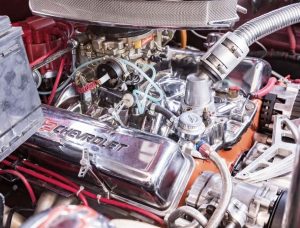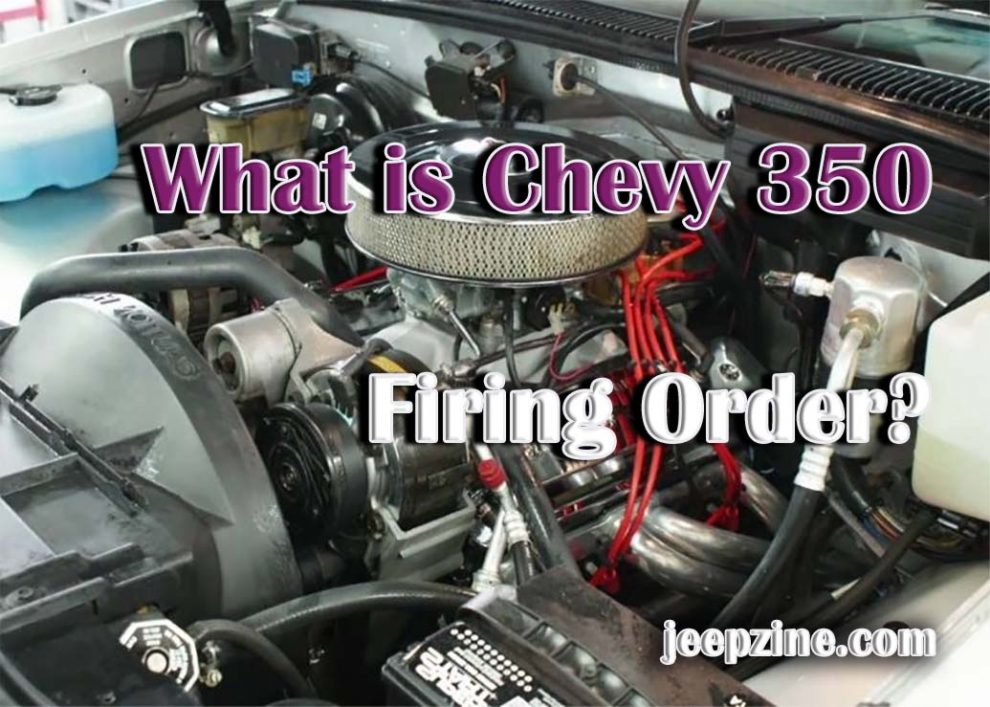What Is a Firing Order?
It’s no secret that the heart of any car is the engine. That’s what makes vehicles, no matter how big or small, move. Arguably, the engine is the most complicated and the most expensive part of any vehicle out there. This applies to sedans, trucks, SUVs, and crossovers. And one of the most important things in a car’s engine is, of course, its firing order. What is a firing order, you ask? Why does it matter?

Otherwise, without a firing order, the engine will get seriously damaged or even rendered broken and out of service. That’s exactly why the firing order matters! Let’s take a closer look at the Chevy 350. This is a mighty, reliable, and quiet engine that puts out impressive HP. However, you can’t just go ahead and crank everything up to 11, making all the cylinders fire at the same time.
The Chevy 350 firing order simply won’t let you do that. It’s the firing order’s job to instruct the cylinders to fire at a specific order so that the engine doesn’t overload and serves for many years (if not decades). Think of it as the engine’s safety protocol. For multi-cylinder engines, strict and coordinated firing order is a must. Technically, it’s not an easy thing to accomplish, but it’s a necessary one. Also read about Chevy 350 High Idle Problem.
Different Orders for Different Engines
Again, a firing order in a modern-day engine is a safety measure, but that’s not the only thing it’s good for. On top of keeping the expensive motor safe, the firing order also reduces vibration, makes everything run smoother, and makes long commutes over rough terrain much more comfortable. This is true both for the driver and the passengers.
The one thing to keep in mind is that engines manufactured by different companies come with their own, unique firing orders. In addition, each engine variation has its own, very specific firing order. That means that the Chevy 350 firing order is different from that of, let’s say, the HEMI 5.7, Ford 3.5 Ecoboost, or the RAM Cummins.
What Is the Chevy 350 Firing Order?
Chevrolet 350 is the most popular and highly-rated V8 motor from the General Motors roster. Incredibly durable, long-lasting, and flexible (it can run not only cars but also boats), the 350 is easily one of the finest V8 engines of our time. It belongs to the small block family of engines, also known as the SBC motors. They are much smaller than big-block crate engines yet still quite capable.
Going back to the Chevy 350 engine, its firing order looks like this: 1 – 8 – 4 – 3 – 6 – 5 – 7 – 2. So, what does this mean – how do you decipher that firing order? It’s not really that hard: the 1 means that cylinder number 1 fires first. Cylinder number 8 follows, and then the fourth cylinder lights up. The cycle goes on, with cylinder #2 being the last one to fire.
Bottom Line
It’s very hard to overestimate the importance of firing orders, and this applies to all the engines and cars on the market, both old and new. Each manufacturer has its own specific firing order that works best for their particular engines. The firing order differs depending on the brand and the type/variation of the engine.
Regardless of the manufacturer, the vehicle, or the engine, the purpose of a firing order is to extend the lifespan of the motor, keep vibrations to a minimum, and ensure a smooth, comfortable ride quality. Without it, the engine will overheat before long, forcing you to pay big bucks for a repair or even a complete replacement.


Add Comment